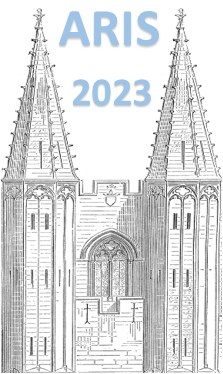Orateur
Description
The SCRIT (Self-Confining RI Ion Target) electron scattering facility [1] was constructed to realize electron scattering from short-lived unstable nuclei at RIKEN in Japan. Electron scattering is one of the most powerful tools for structure studies of atomic nuclei because of the well-understood mechanism of electromagnetic interaction. It has, however, never been applied to short-lived unstable nuclei because of the difficulty in preparing thick target although it has been long-desired to investigate exotic features of unstable nuclei by electron scattering [2].
Recently, we succeeded in realizing the world's first electron scattering from online-produced unstable nuclei at the SCRIT facility after years of developments. Caesium nuclides were produced via photo-fission of uranium by irradiating 28-g uranium with 15-W electron beam and were ionized with the surface ionization type ion source at an ISOL system [3]. Thanks to a high production rate of caesium nuclides and the development of beam stacking methods in the ISOL and a Cooler-Buncher [4] systems, approximately $10^7$ of $^{137}$Cs ions/pulse beams were delivered into the SCRIT system, the averaged luminosity of $0.9\times10^{26}$ cm$^{-2}$s$^{-1}$ was achieved. The obtained angular distribution of elastically scattered electrons is consistent with a calculation. This experiment perfectly mimics the experiment of electron scattering from short-lived unstable nuclei produced online after the power of the ISOL driver is upgraded.
In this contribution, we will report recent results and future prospect of the SCRIT electron scattering facility.
[1] M. Wakasugi et al., Phys. Rev. Lett. 100, 164801 (2008)
[2] T. Suda and H. Simon, Prog. Part. Nucl. Phys. 96, 1 (2017)
[3] T. Ohnishi et al., Nucl. Instr. Meth. B317 (2013) 357
[4] M. Wakasugi et al., Rev. Sci. Instrum. 89 (2018) 095107

